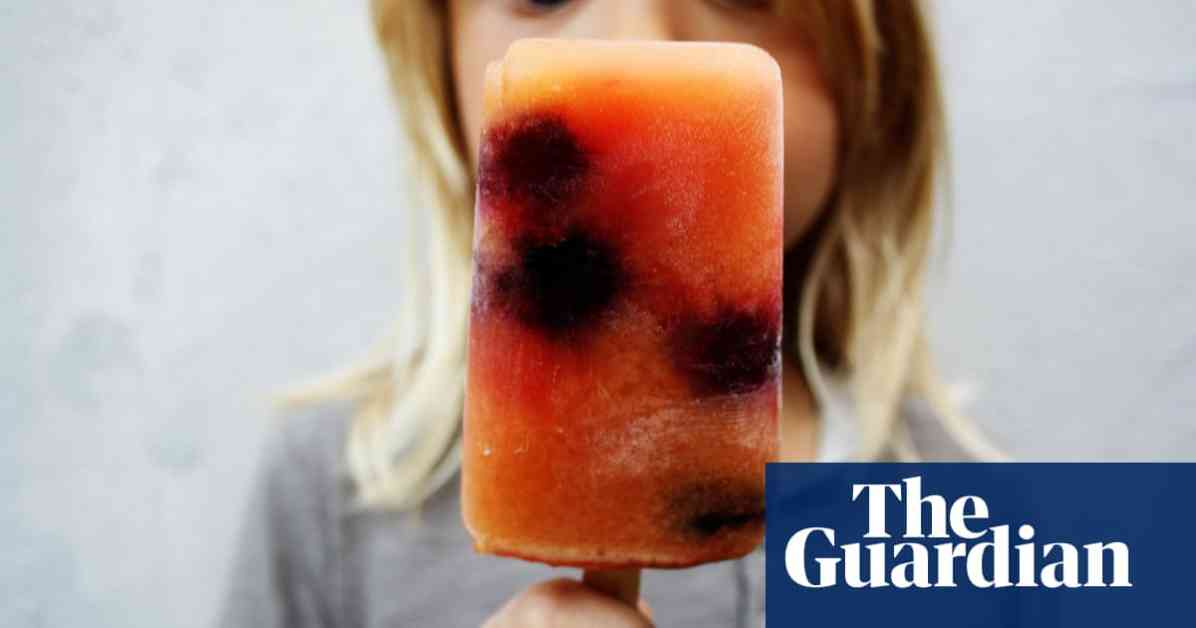Adding Ice-Lolly Licking to UK Primary School Curriculum: Scientists’ Urgent Call
As children across England enjoy their favorite ice lollies on hot summer days, scientists from the Royal Society of Chemistry are advocating for a unique addition to the national primary school curriculum – ice-lolly licking. This seemingly fun activity serves a greater purpose beyond just satisfying a sweet tooth. According to experts, it can teach children crucial scientific concepts such as heating, cooling, and the effects of temperature.
Exploring the World of Science Through Ice Lollies
The idea of incorporating ice-lolly licking into the curriculum may seem unconventional at first, but the underlying rationale is quite compelling. In the realm of chemistry education, understanding the principles of temperature and its impact on matter is fundamental. By engaging in this hands-on activity, students can observe firsthand how heat causes the ice lolly to melt and how cooling leads to its solidification.
Aylin Ozkan, a teacher and education policy specialist at the Royal Society of Chemistry, highlights the significance of using everyday experiences to enhance learning. She emphasizes, “One of the recommendations for chemistry education is that by the age of 11, all children should grasp the basic concepts of temperature and its effects. What better way to demonstrate this than through the simple act of enjoying an ice lolly? These essential experiences not only make learning more engaging but also promote a deeper understanding of scientific principles.”
Incorporating Practical Science Experiences
Beyond ice-lolly licking, the proposed changes to the science curriculum for primary schoolchildren encompass a range of hands-on activities designed to foster a holistic understanding of scientific concepts. The Royal Society of Chemistry, along with leading professional science organizations, advocates for experiences such as kneading bread dough, exploring soil, planting vegetables, and experimenting with shadows as integral components of early science education.
These “essential experiences” are aimed at not only enriching students’ scientific knowledge but also at reducing inequalities in STEM education. By providing all children with access to practical, real-world science activities, educators hope to instill a lifelong curiosity and appreciation for the sciences.
The Role of Professional Organizations in Educational Reform
The recommendations put forth by organizations like the Royal Society of Chemistry, the Institute of Physics, the Royal Society of Biology, and the Association for Science Education underscore the importance of a comprehensive and inclusive science curriculum. By emphasizing the need for a balanced approach that integrates various scientific disciplines and practical experiences, these organizations seek to empower teachers and students alike.
Charles Tracy, a senior adviser in learning and skills at the Institute of Physics, emphasizes the value of incorporating diverse elements into science lessons. He explains, “Teaching concepts such as light and sound through hands-on activities like music-making can enhance students’ understanding and engagement with physics. By broadening the scope of the curriculum to include such experiential learning opportunities, we can make science education more inclusive and accessible to all students.”
Promoting Environmental Awareness and Sustainability
In addition to traditional scientific concepts, the proposed changes to the curriculum also prioritize environmental education and sustainability. The Royal Society of Biology advocates for incorporating activities such as growing vegetables, exploring green spaces, and learning about recycling to instill a sense of responsibility towards the environment in young learners.
Lauren McLeod, the head of education policy at the Royal Society of Biology, underscores the importance of connecting science education to real-world issues. She states, “By engaging students in activities that highlight the interconnectedness of living things and the environment, we can nurture a generation of environmentally conscious individuals. Experiences like growing vegetables and observing life cycles can inspire children to make informed and sustainable choices.”
Support from the Education Community
Teachers and educational leaders have welcomed the proposed changes to the science curriculum, recognizing the value of hands-on learning experiences in fostering scientific curiosity and understanding. Matt Jones, a co-headteacher at multiple primary schools in London, emphasizes the significance of using relatable examples to teach scientific concepts. He notes, “Engaging students through everyday experiences like melting ice lollies can make complex scientific ideas more accessible and memorable. By connecting learning to students’ lived experiences, we can enhance their comprehension and retention of scientific knowledge.”
Sarah Hannafin, head of policy at the National Association of Head Teachers, acknowledges the importance of building upon existing successful practices in STEM education. While supportive of the proposed changes, she also advocates for streamlining the curriculum to focus on what works best and eliminating unnecessary content. By striking a balance between innovation and consolidation, educators can ensure that students receive a well-rounded and impactful science education.
In conclusion, the call to include ice-lolly licking and other practical experiences in the UK primary school curriculum reflects a broader shift towards engaging, inclusive, and relevant science education. By embracing hands-on learning opportunities, educators can ignite students’ passion for science, nurture their curiosity, and equip them with the essential knowledge and skills to thrive in an increasingly complex world.


